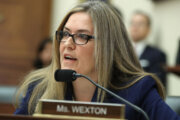The West experienced yet another heat wave this weekend, this time hitting parts of Montana, Idaho, Wyoming and Utah, with temperatures expected to peak Monday. This comes after California’s Death Valley reached 130 degrees fahrenheit last weekend, and follows a record-breaking month of hot weather. June 2021 became the hottest on record for the U.S., with temperatures breaking records throughout the Pacific Northwest — resulting in hundreds of deaths throughout the region.
About 600 people die annually from extreme heat, according to the Centers for Disease Control and Prevention. But the agency says that heat-related illnesses and deaths are preventable.
Among those most vulnerable to heat-related illnesses are those working in hot, outdoor environments. In Oregon, advocates urged state officials to institute emergency rules to protect workers following a farmworker’s death after he completed a shift outside during the heat wave in late June. Gov. Kate Brown on July 6 directed the state’s Occupational Safety and Health Administration to put emergency rules in place for employers, including requiring employers to provide shade, cool drinking water and regular breaks for employees, among other regulations.
“No one should have to decide between their health and a paycheck,” Brown said in a statement announcing the Oregon OSHA emergency rules. “All Oregonians should be able to go to work knowing that conditions will be safe and that they will return home to their families at the end of the day.”
In other states, worker protections during extreme heat are already in place. California, considered the national leader on the issue, has a statewide occupational heat illness prevention standard that includes training and planning, along with requirements for providing water, shade and breaks for those who work outside.
Washington has a similar occupational heat illness prevention standard, requiring employers to create an outdoor heat exposure plan, train employees, increase the amount of water provided to employees on days when temperatures require preventive measures, and be prepared to react to symptoms of heat-related illness. But members of the United Farm Workers noted in a statement that the state’s protections fell short of California’s, urging Gov. Jay Inslee to issue additional emergency protections.
[READ:Air Conditioning Trends in America’s Biggest Cities]
“This heat wave is a matter of life and death,” said UFW Foundation Executive Director Diana Tellefson Torres. “Shade and rest at the workplace are basic yet critical rights farm workers still lack in Washington. Heat is battering the workers who feed us. How can we call them essential yet deny them something so basic as the right to shade and rest to prevent death and illness during perilous weather?”
On July 13, additional rules took effect in Washington, requiring shaded areas for employees to cool down and ensuring that workers have a paid rest period of at least 10 minutes every two hours to cool down.
In Minnesota, a heat-stress standard is also in place, designed to protect employees against the risk of heat-induced illnesses by requiring employers in the state to conduct training for workers who may be exposed to hot environments.
Some protections are in the works in Colorado, as well. Gov. Jared Polis in June signed SB87, a bill concerning agricultural workers’ rights, which among other protections instructs the state’s Department of Labor and Employment to enforce protections for workers when outdoor temperatures reach or exceed 80 degrees.
Under federal OSHA law, employers are responsible for “providing workplaces free of known safety hazards,” including from extreme heat, and the organization launched a campaign in 2011 to educate employers and workers about the dangers of working in extreme heat. Despite the group’s recommendations, there is no federal occupational heat illness prevention standard.
More from U.S. News
For 2021, States Raise Minimum Wage, Legalize Pot, Expand Paid Leave and More
The Most Disaster-Prone States in the U.S.
Air Conditioning Trends in America’s Biggest Cities
As Heat Waves Continue, States Utilize Standards for Those Working Outside in Extreme Heat originally appeared on usnews.com







